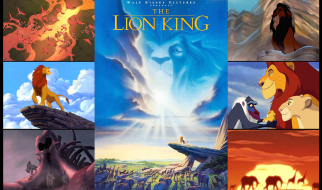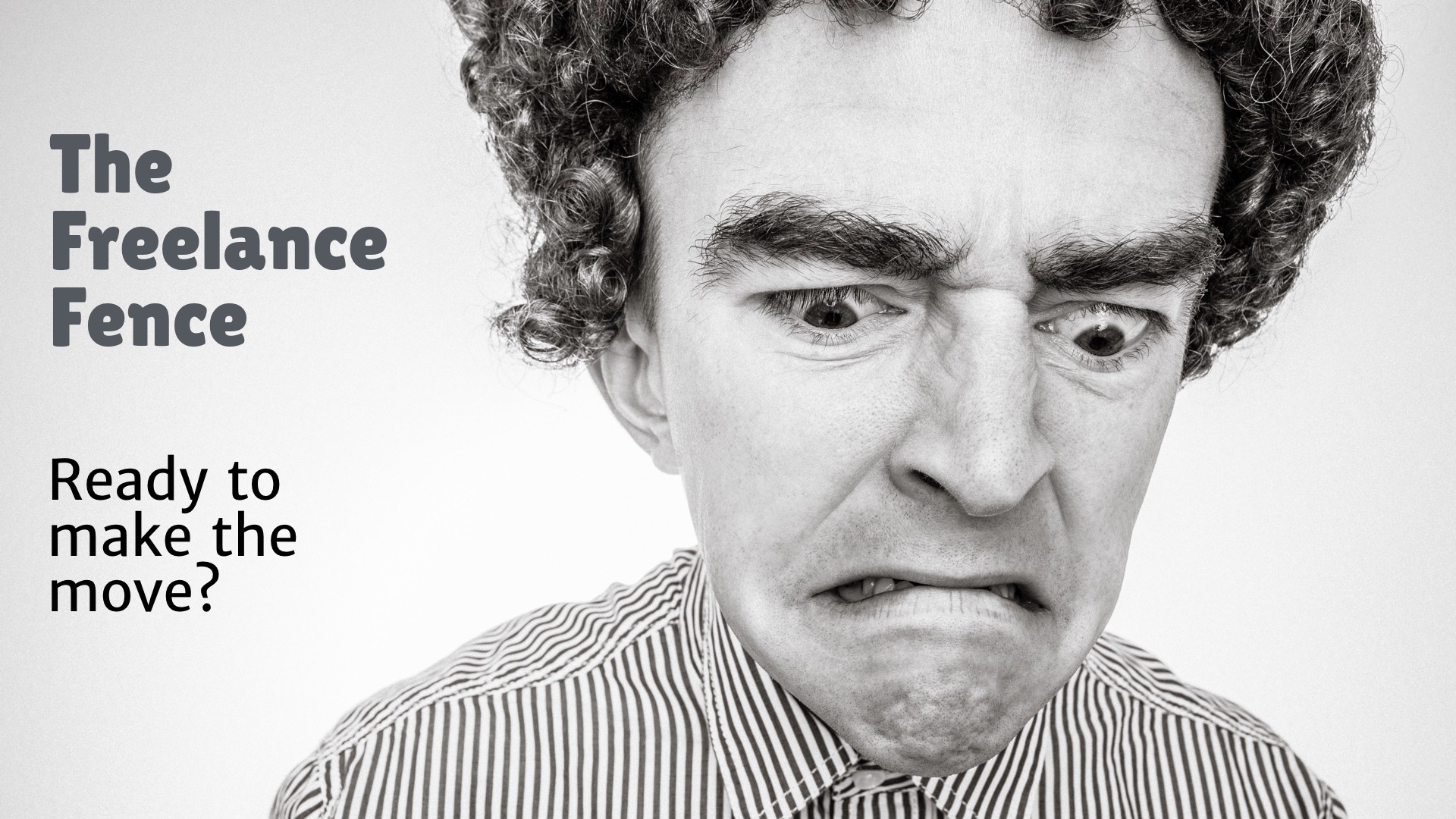 Image courtesy of https://gratisography.com/
Image courtesy of https://gratisography.com/
Don?t be scared.
There?s no question that making the jump into becoming a freelance UX designer comes with its unique set of pros/cons and is not always an easy decision. To help you, I consulted dozens of industry experts, scoured the web for information, and compiled my findings in this article.
If you?re on the fence about freelance UX work, my hope is that you?ll find something of value here. This article is for both designers just starting out and experienced professionals considering the move into freelance.

Part 1: Six Key Findings
The internet is full of information about user experience, freelancing, and running a business; the problem was in finding a single source that brought it all together. In reality, there is no all-inclusive, magical page that is going to answer everything for everyone. What might work for me could sound like a terrible idea for you.
Luckily, it is possible to take from some of the best sources out there, analyze & present them, then let you make the choice. During my research, six themes, or ?key findings?, continued to show up.
These key findings were: Define, Experience, Visibility, Money, Time, and Network. Let?s take a look at the meaning of each of these and how they apply to freelance UX.
Key Finding #1: Define
The first key finding seemed to appear on almost every resource on freelance UX work. Time and time again, I encountered the word DEFINE.
I suggest you get a notepad out and write these down, followed by how you would respond to each point:
- Define your UX design process and how you work; do you know what it is?
- Define your motivation; why do you want to do freelance work?
- Define what projects you will/won?t do, and tell yourself that you?ll be okay saying ?no? to some projects
- Define your role with the client when you meet with them
- Define what success looks like for you and your clients
- Define what sets you apart from the competition
Key Finding #2: Experience
This might be the key finding that stresses me out the most.
?Do I have the experience to go out on my own??
?Do I have the reputation yet??
?Will people value my work??
Do you find you?ve asked yourself these same questions? It?s okay if you have, we all do. Here?s a professional?s perspective on it:
?When you look inward and push yourself to come up with ways to serve your clients, you end up redefining what you do and expanding your services.? ~ Mike McDerment and Donald Cowper: Breaking the Time Barrier ? How to Unlock Your True Earning Potential
I like what is said here ? push yourself. You?re never going to get any experience under your belt if you don?t get out there and expand your services.
Here are some other valuable points to consider:
- It should be a no-brainer that experience doesn?t come overnight?so keep at it!
- Build up your skill set and never stop learning (I can?t stress this enough!)
- With time you can typically expect to receive more money, that?s just the way it works ? BUT ? don?t charge less because it took you less time; you have value as a person with skills & talents and each day adds to your professional experience
- Parlay your success stories (aka: your experiences) into future projects and future clients
Key Finding #3: Visibility
Just as we?re encouraged to be good citizens in our local communities, do the same in the design world. Be a visible, active part of design groups and get your name out there.
One of the best ways to be recognized and stay up-to-date is to attend local meet-ups (Meetup.com) and events around you. Find UX design conferences and gatherings where you can mingle and stay in touch with design folks like yourself.
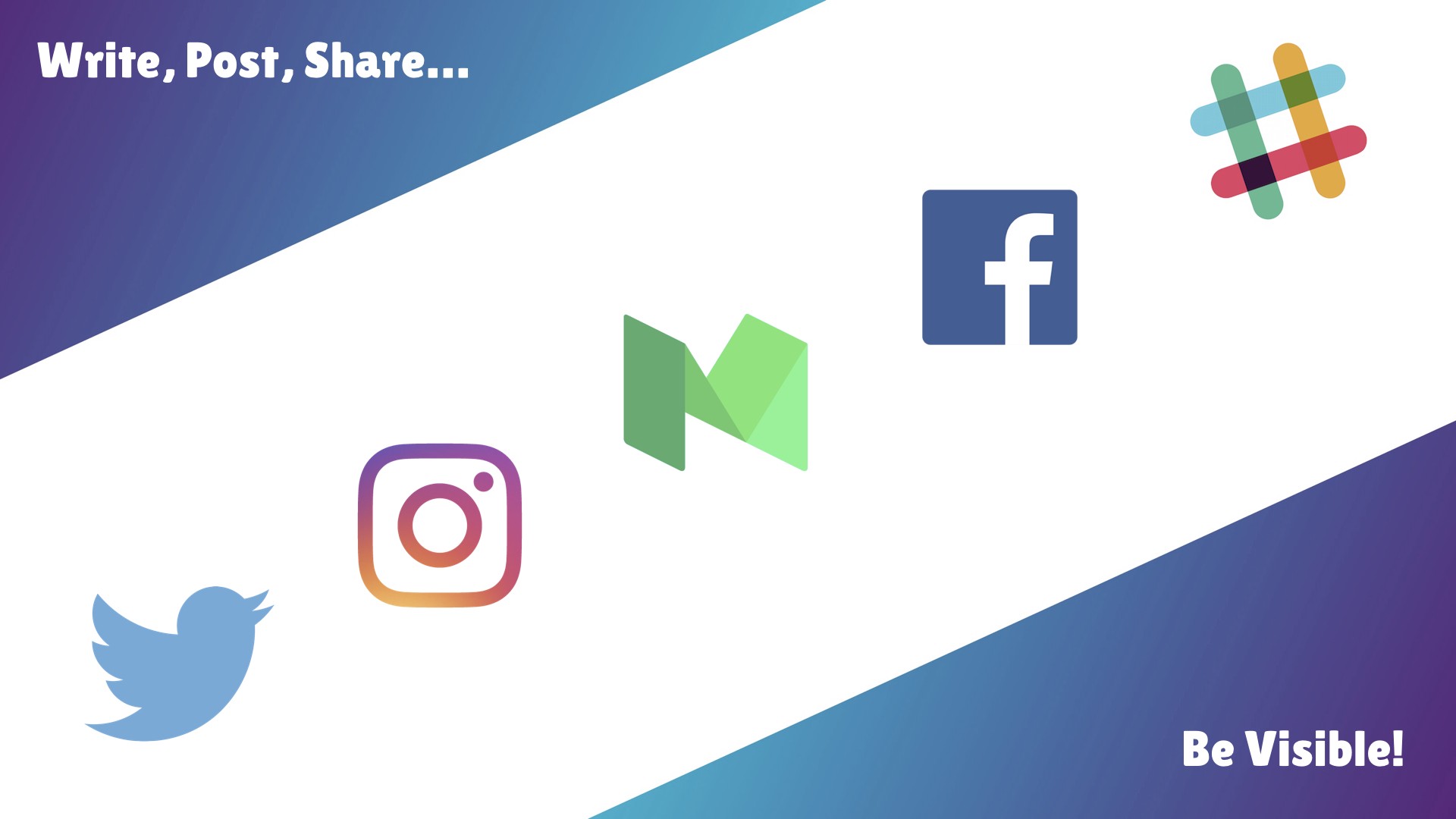
Write about your design experiences, contribute to online groups, stay involved through social platforms like Twitter, LinkedIn, Instagram, Medium, Facebook, Slack, Dribble, and more.
Getting your content out there helps you become a better online communicator, and helps build your personal brand. If you?re not yet established on one of these social platforms, I highly recommend building a profile today.
?You are your brand and your brand is everything. Do things the right way.? ~ Shawn Perkins, Freelance Creative Director, Utah
Key Finding #4: Money
Ah yes, the topic of money. What do I charge my clients? How do I charge them? Will I get paid?
Let?s first look at talking to your clients about money, which is where some freelancers struggle the most.
Undoubtedly, it?s a skill to learn how to talk money with a client. But, even if it makes you feel uncomfortable, you need to learn it. This is especially important if things start to go awry during the project.
Don?t ever keep working without pay.
Unfortunately, there?s just no magical formula for what to charge your clients on a project. I promise you there?s a reason, though. Here?s one of the best ways I?ve found to put it into words:
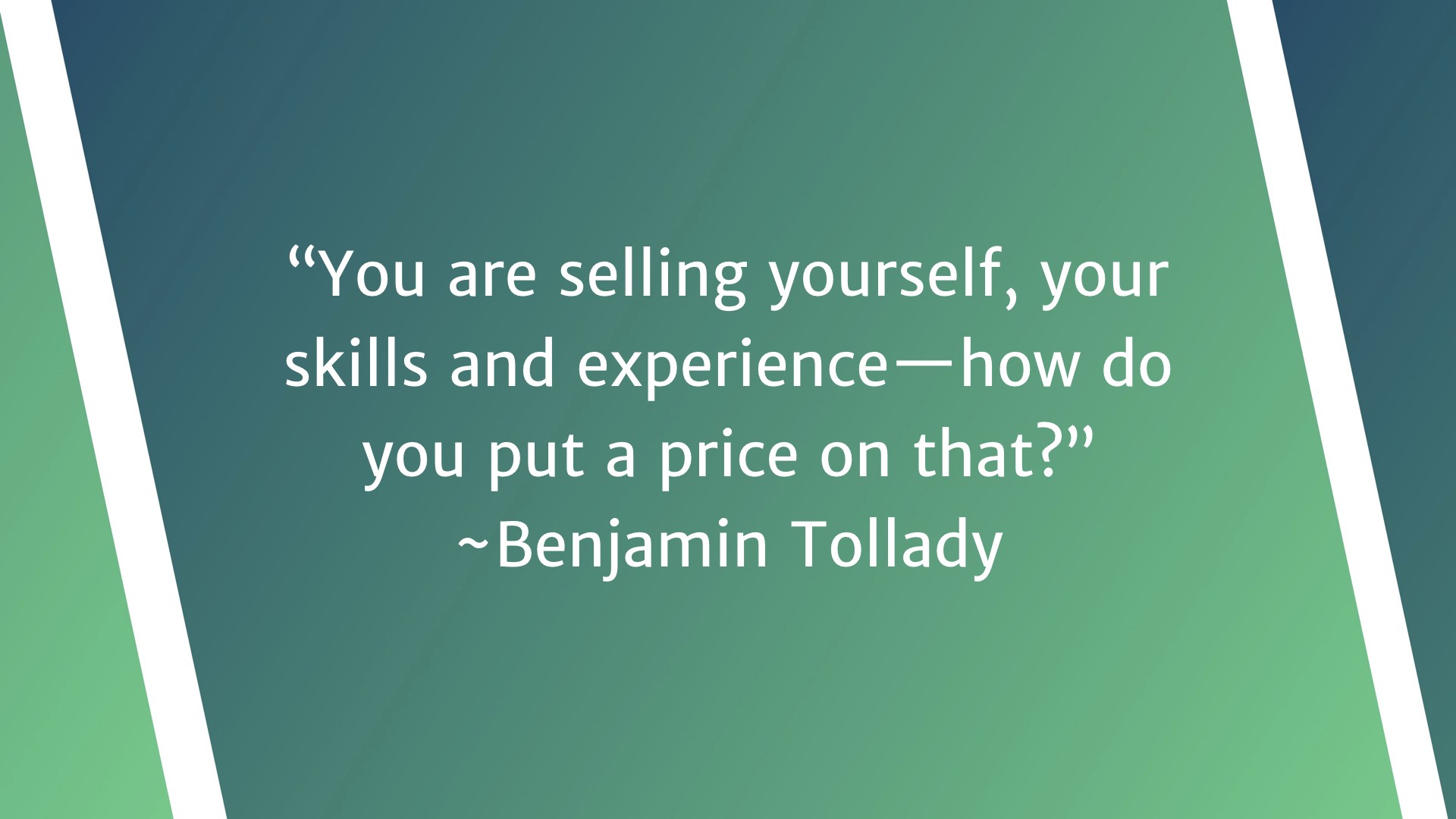
?You are selling yourself, your skills and experience ? how do you put a price on that?? ~ Benjamin Tollady, http://uxmastery.com/how-to-estimate-a-ux-project/
There are differing opinions that strongly encourage selling solutions and impact versus just billing hours to the client. On the flip side, some swear by billing hourly.
So what pricing structure should you use? Out in the freelance industry, you?re likely to run into these pricing methods:
- Hourly-rate
- Day-rate
- Project-rate (fixed price)
- Ballpark figure + hourly
- Buckets of hours
In a 2014 survey conducted by HowDesign of nearly 1,000 designers, the following results were presented for what designers were charging hourly on average in the United States:
- Low-end average: $26.88/hr.
- On average: $68.50/hr.
- High-end average: $190/hr.
How do you know which one to pick and what will work best for your freelance business? I particularly like Leisa Reichelt?s approach to this pricing dilemma:
Once you?ve set your rate, keep track of how many people simply accept it and how many wince and complain at the rate. If more than 1 in 4 wince, you may need to lower your rate a little. If fewer than 1 in 4 wince, you may need to put your rate up. ~ Leisa Reichelt ? http://www.disambiguity.com/10-tips-ux-freelancing/
Lastly, here are a few takeaways regarding money to help further guide your freelance decision:
- It?s okay to have a conversation with the client, take what you learned, then come back the next day with a proposal. When talking with clients, always frame your solution as an investment and not an expense.
- Explore their needs before taking their budget to heart because they themselves may not understand completely why they need a website, app, etc.
- If you get uncomfortable talking about money, ask fellow freelancers how they do it. If it?s the business side of money, like income taxes & tax brackets, business fees & licenses, overheads, profit-loss statements, billing, etc, speak to an accountant first before making any sudden moves into full-time freelance.
Key Finding #5: Time
Here?s a piece of advice that might be the key component, magic bullet, and the exact nugget you need to hear about freelance work, and that is:
?Enjoy the down time.? ~ Shawn Perkins, Freelance Creative Director, Utah
Why is the down time so important? Going back to Leisa Reichelt?s post, she furthers that advice with this thought about your time and how you spend it:
?It is not sustainable to work ridiculous hours indefinitely. You will probably have to do it sometimes, don?t make it a way of life. Your mental health, family/social life and the quality of your work will all suffer. Even if you say ?screw my mental health and family?, the quality of your work is the indicator of both the volume and interestingness of your future work. Don?t do anything to jeopardize that.? ~ Leisa Reichelt ~ http://www.disambiguity.com/10-tips-ux-freelancing/
If you?re working ridiculous amounts of time for a client, keep track of those hours! Document your time well ? those notes will be essential for your success in future projects and will help you learn from your mistakes.
Remember that with freelance work comes the freedom to set your own schedule. Be smart about it. Balance work, personal, and family time well and freelancing could change your life forever? for better or for worse.
?The value of what I do is based on the impact I can have on my client?s business.? ~ Mike McDerment and Donald Cowper: Breaking the Time Barrier ? How to Unlock Your True Earning Potential
You?re not just billing hours to the client, you?re billing a solution and something that will have a lasting impact on their business.
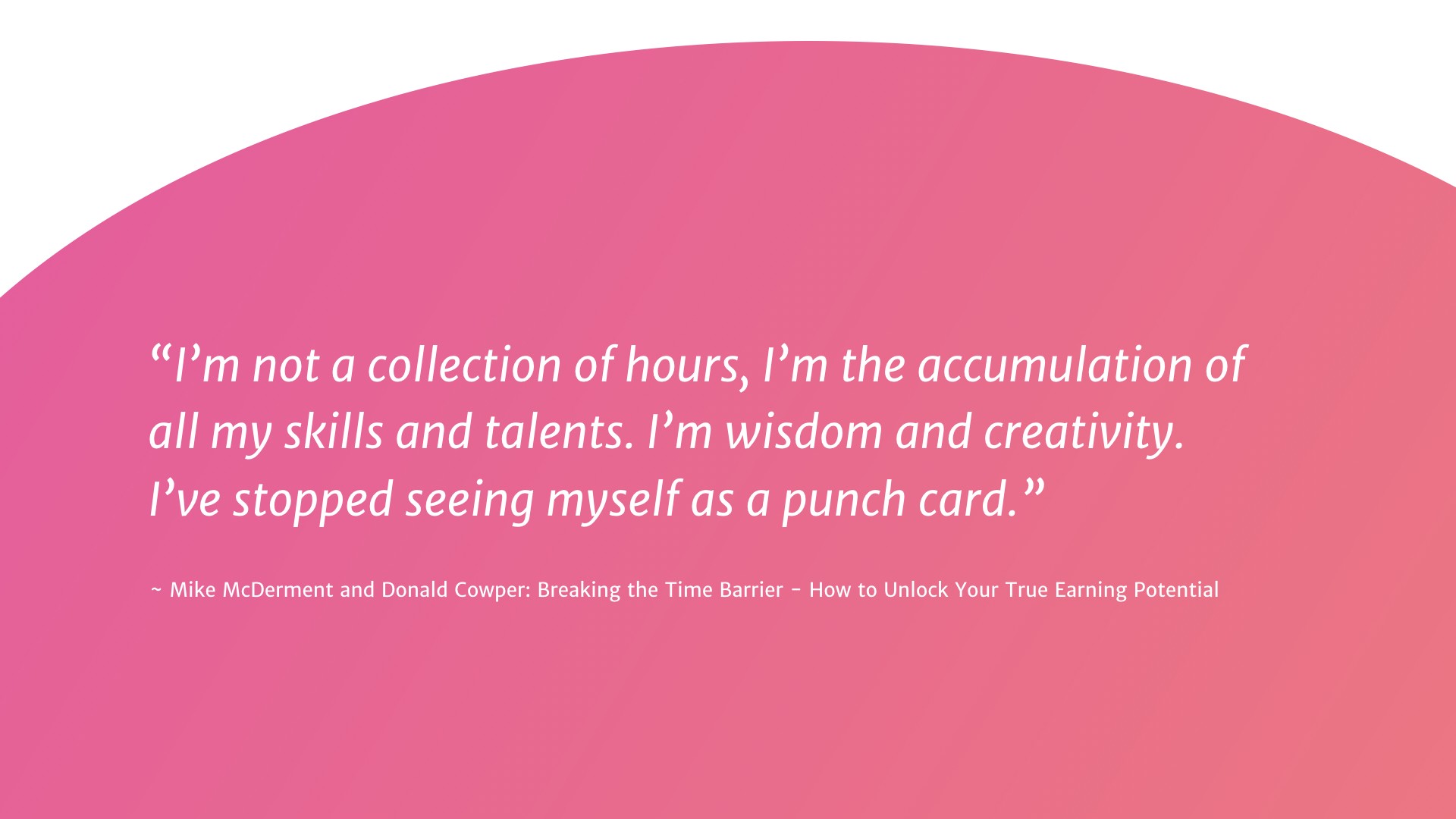
?I?m not a collection of hours, I?m the accumulation of all my skills and talents. I?m wisdom and creativity. I?ve stopped seeing myself as a punch card.? ~ Mike McDerment and Donald Cowper: Breaking the Time Barrier ? How to Unlock Your True Earning Potential
Take time first to understand the client?s needs. How is that done?
Ask why?a lot.
Find out their pain points, goals, and motivations; it?ll all come out by simply asking: ?Why??
Key Finding #6: Network
Keep in mind that at your next Meetup or design conference, one of the people there could introduce you to your next project! Stay connected! People move around and you never know when you?ll meet your next client.
Another useful attribute of networking with the design community is being able to ask them what they?re charging for similar projects. That being said, make friends in the design community; do good work and these friends will notice, recommending you for future projects and clients.
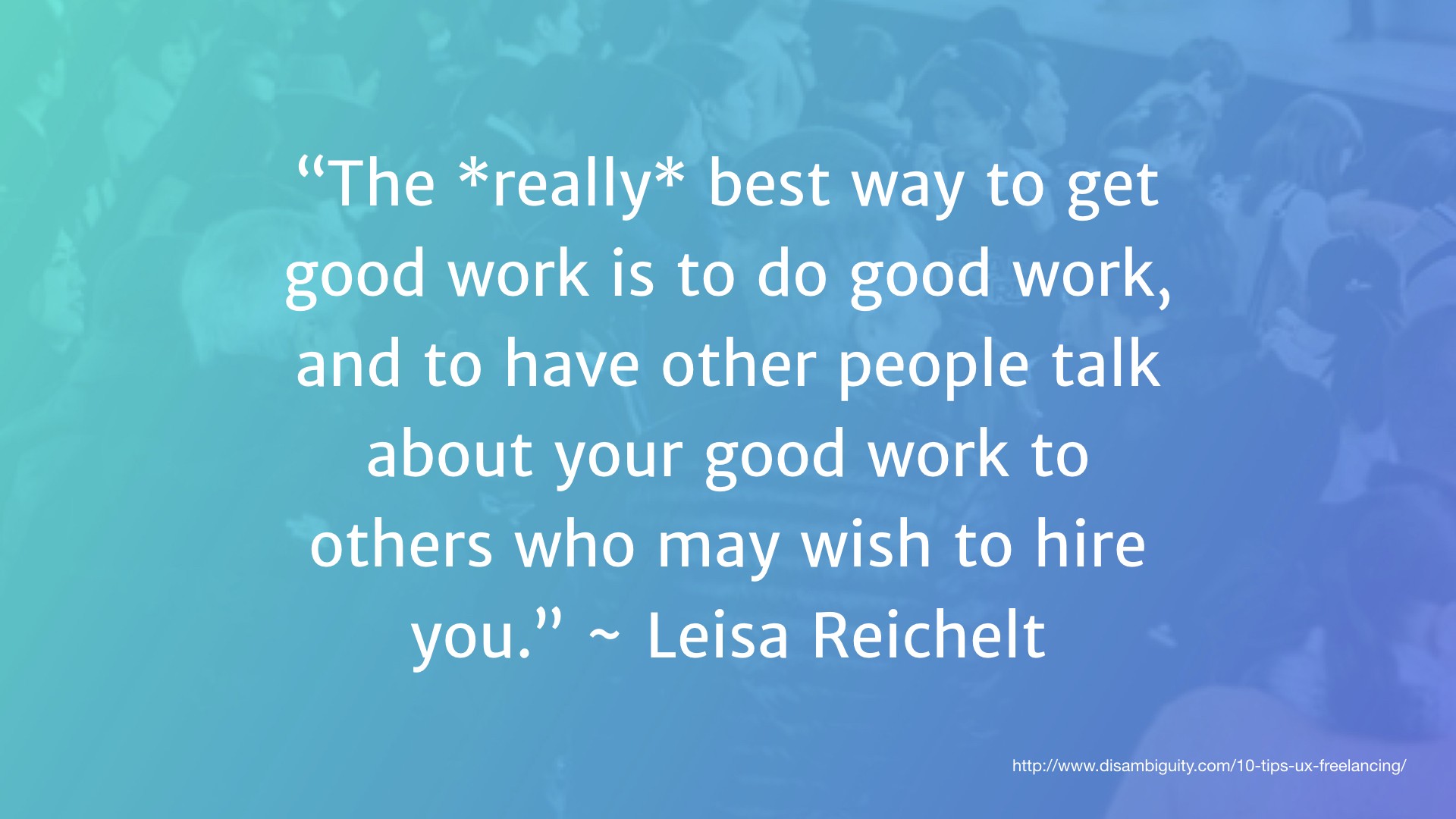
The *really* best way to get good work is to do good work and to have other people talk about your good work to others who may wish to hire you. ~ Leisa Reichelt ? http://www.disambiguity.com/10-tips-ux-freelancing/
Build a relationship of trust with your clients, peers, co-workers, and friends and they will become referral engines for you to your next project.
?As soon as their investment in you translates into real value for them, you become a trusted partner, someone they will continue to work with. They will also become champions for you, leading you to other opportunities.? ~ Mike McDerment and Donald Cowper: Breaking the Time Barrier ? How to Unlock Your True Earning Potential
Alrighty, so let?s wrap up this section. You have been introduced to six key areas of freelance that will at some point be a topic of discussion in your decision.
To summarize, they are: Define, Experience, Visibility, Money, Time, and Networking. Get a strong grasp on these areas and you?ll be well on your way to understanding yourself and the direction you?d like to take your career.
On to part 2.
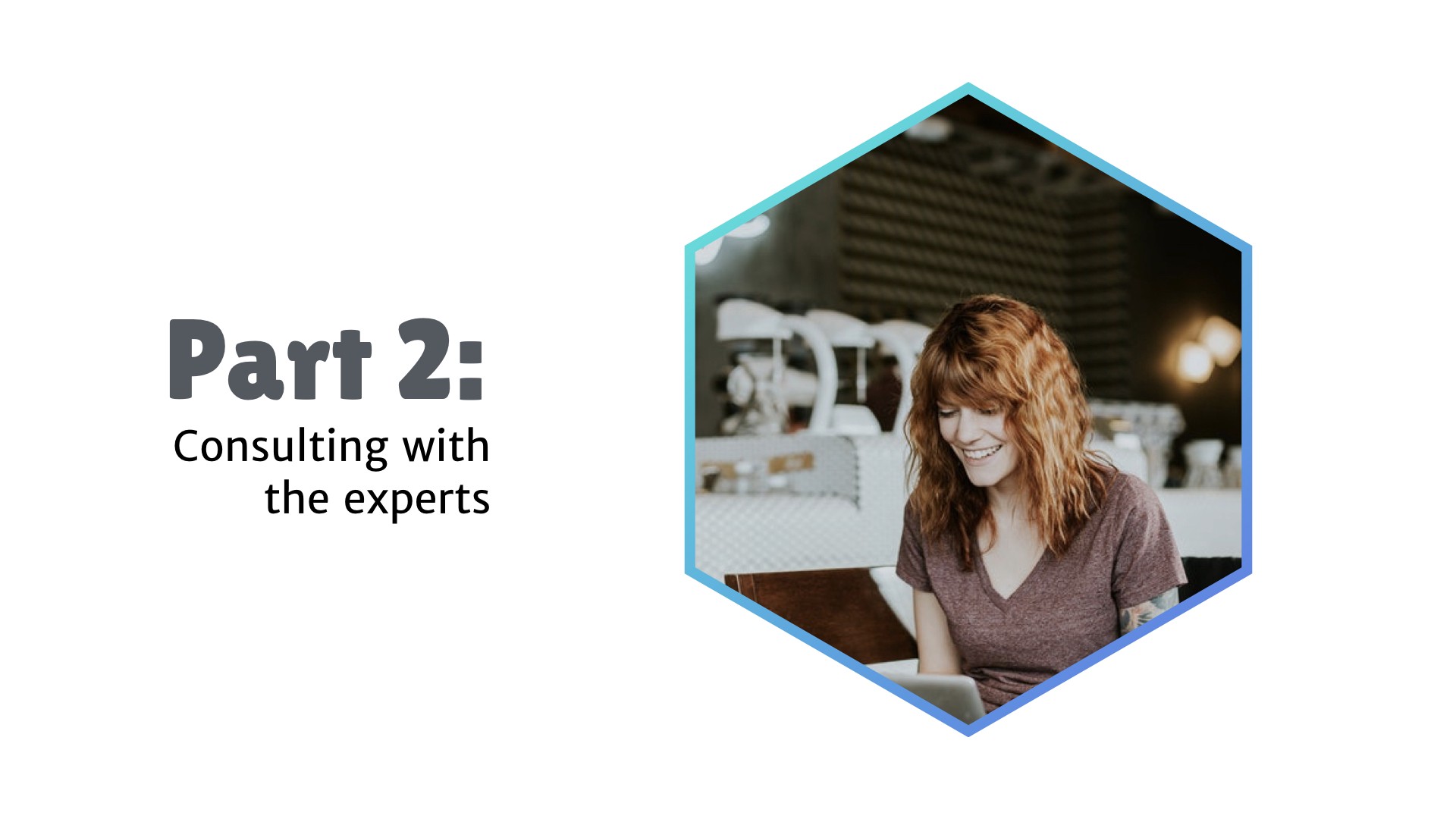
Part 2: Consulting with the Experts
Progress check. How are we feeling so far about freelance work? Have you decided one way or another? If you?re still not quite sure about which way to go, this section should offer the insights you need.
I didn?t want this beginner?s guide to sound like it was all pulled from my pea-sized brain because, let?s face it, I don?t have all the answers. As mentioned at the beginning of this course, I approached this topic by doing my own research and backing it up by consulting with dozens of experts in the design industry.
After interviewing them and picking their brains for information, the following responses are an accumulation of the best advice you?ll find in any single source, in my opinion.
Here?s how it shakes down:
Question 1: How many years of UX design experience do you have under your belt?
- Average: 8 years
Question 2: Are you currently a Freelance UX Designer? If yes, please explain why you chose freelance work.
- 71% of respondents said they currently are a freelancer or have done freelance work
- The top three reasons why they freelance: Side work, to explore new designs, and to make extra cash (I find it interesting here that a majority of respondents, even with all that UX experience, did freelance work on the side and not full-time)
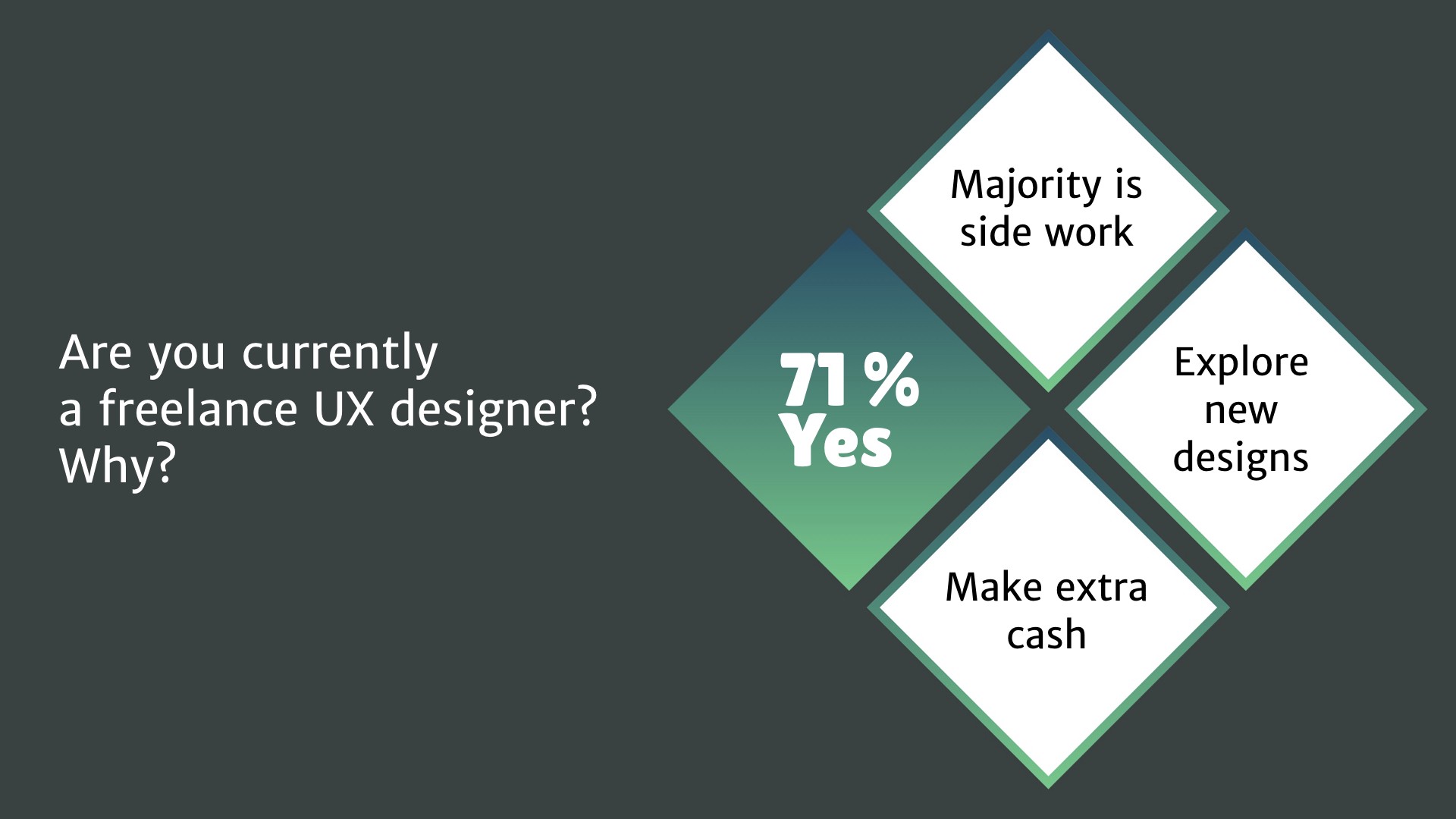
Question 3: Which freelance pricing structure seems most logical when bidding a job?
- The results to this question were pretty straightforward. Hourly-rate pricing took the win, with project-based coming in at a close 2nd place
Question 4: Why did you choose that pricing structure?
- Hourly-Rate: The client knows what they?re getting; I get paid for my time; it?s good for the unforeseen things; works for long-term projects; I can bill extra hours; it addresses scope creep; it provides flexibility
- Project-Based: You can finish a project quickly but charge for your skills; cuts down on scope creep; helps the client value your work; provides flexibility to earn less or more; a more profitable method when you work fast; words great for the smaller projects

Question 5: What do you perceive is the hardest part about freelance work? What is the most rewarding?
Top 3 Hardest Parts of Freelance Work:
- Finding clients and work
- Managing client?s expectations
- Running the side business
- Honorable Mention: Time management
Top 3 Most Rewarding Parts of Freelance Work:
- The impact of the finished product
- Setting your own hours
- Building a solid portfolio & reputation
- Honorable Mention: The ability to make lots of $ an hour!
Question 6: It seems one of the challenging facets regarding freelance work is placing value on your time, talents, and skills, then translating that into a fair price. How would you suggest one approaches this with a client?
I found repeating answers to this question from all the design experts in my research.
- Be honest
- Know your UX process
- Love helping people
- Deliver on your promises
- Take pride in your work
- Don?t sell yourself short
- Weed out the bad clients
- Define the scope of the project first
Sounds like common sense, right? But, remember, this is eight years of industry experience drilling this into our heads.

Conclusion
I hope you?ve learned something new and useful; I know I did as I interviewed and surveyed these seasoned designers. Remember that full-time freelance equals a full-time time business. Learn the ropes in industry first before jumping into freelance and embrace the universal truth that mistakes will happen.
- If talking about money scares you, visit TED.com and practice your communication skills.
- If the business, taxes, and legal aspects keep you up late at night, talk with a tax professional or lawyer.
- Define the scope of your projects in writing first.
- Output tons of great design work and it will pay off!
- Maintain your portfolio.
- Don?t feel like you have to accept every project.
- Don?t work for free. Ever.
Here?s my last piece of advice and I hope you?ll take it to heart.
Value yourself as a talented, gifted UX designer and never lose the humble desire to learn.
There you have it ? the beginner?s guide into the world of freelance UX design. I welcome your thoughts, opinions, critiques, additions, suggestions, and feedback. Please help share with our amazing network of UX designers throughout the world!
You can also access this article, along with many other helpful UX strategies, on my personal site, MikeWCurtis.com

